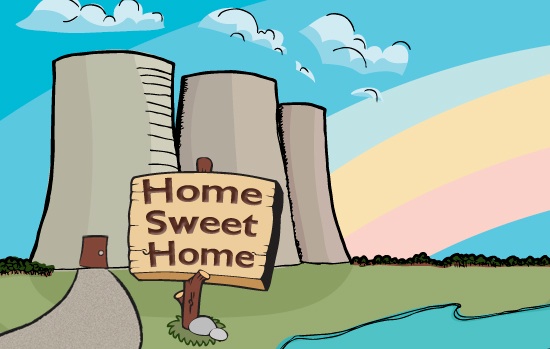Just 75 miles from where workers try to stave off nuclear disaster at Fukushima, another nuke plant is doing double duty as a tsunami shelter. The nuclear facility at Onagawa is currently home to 240 people displaced from the local town, who are hanging around watching TV and making phone calls while they wait to rebuild. It’s like the clean, roomy, safe, well-lighted, fancy-toileted version of the post-Katrina Superdome:
"I'm very happy here, everyone is grateful to the power company," said Mitsuko Saito, 63, whose house was leveled in the tsunami. "It's very clean inside. We have electricity and nice toilets."
Those sheltering at the plant live in relative luxury compared to many other survivors. Most of Onagawa is still covered in a thick layer of dust. There is no running water or cellphone service, and only a few neighborhoods have electricity. Nearly 1,100 of the 10,000 residents are dead or missing, and 5,500 more have moved into schools and civic centers.
Within the nuclear plant, facilities are pristine, electricity flows directly from Japan's national grid, and evacuees can use its dedicated phone network to make calls.
The Onagawa plant was built to stricter specs that Fukushima, and suffered only minor damage in the quake and tsunami.
The crisis at Fukushima is making Japan, and the rest of the world, understandably squirrelly about nuclear power. But it’s important to remember that Japan’s remaining reactors are providing power to a country still reeling from a disaster, where electricity is a valuable resource when resources are scarce. And in the case of Onagawa, they’re providing shelter and safety as well.


